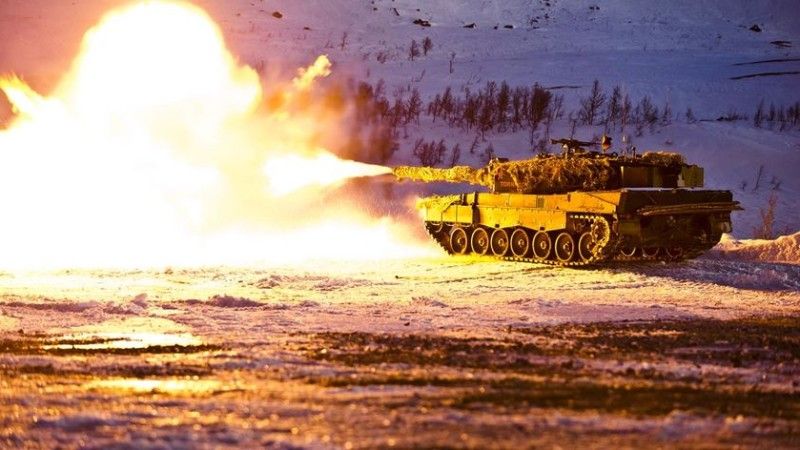Armoured Forces in Norway at the Crossroads. New Main Battle Tank or Leopard Upgrade Programme?

The Norwegian Parliament decided that the Armed Forces shall still have an ability to operate the main battle tanks. Defence24.pl found out that no steps have been taken so far as when it comes to the way in which the above would be done – whether Leopard 2 fleet would be upgraded, or if Norway decides to procure a new tank.
READ MORE:
As Lars Gjemble of the Norwegian MoD’s press department informed us, the “Norwegian Parliament decided in December 2017 to maintain a modern Main Battle Tank capability in the future for the Norwegian Army. Which platform this capability will be based on, will be selected through a procurement process.”
The government of Norway adopted a long term plan back in December 2017, to expand the potential of the land forces. The assumption is to further expand the investment in the area of direct air defence assets used by the Army. Oslo is willing to introduce NASAMS-derived mobile air defence system into use, with the launchers based on HMMWV and M113 platforms. AIM-120 AMRAAM and IRIS-T would be employed by the effectors. Armoured potential is also seen as a priority area within the scope of modernization efforts.
Originally, the fleet of 50 Leopard 2A4 NO main battle tanks was to undergo upgrades. However, no relevant decisions within the said scope have been made as of yet. Upgrading the Leopard tanks is being considered in parallel with acquisition of a new main battle tank.
The statement issued by the Norwegian MoD suggests that soon, a wider scheme for procurement would be developed, considering a variety of solutions and amounts that could be involved. However, the representative of the MoD added: “The Parliament decided that a modern MBT capability shall be maintained in the future. A MBT capability is included in the long term plan. What type of MBT is yet to be determined.”
Lars Gjemble, when referring to the date of potential withdrawal of the Norwegian Leopard 2 tanks, stressed that “Several European nations plan to keep the Leopard 2 MBT well into the next decade, possibly in to the 2030-ies. This is also an alternative for Norway to consider.”
Gjemble added that “a timeframe for a contract signature is not yet decided. It remains to see if the Leopard is selected as the MBT platform for the future”.
The Norwegian MoD is willing to give consideration to a variety of options, when it comes to the MBTs domain. Maintaining the tanks in the active service and in-depth upgrades as well as acquisition of a new platform are both considered to be viable here. The Norwegian decision is yet another symptom of a main battle tanks’/land forces’ renaissance.
Read More: Leopard 2A7 Tanks with European Support. RFI Does not Include Other Variants. [ANALYSIS]
Back in December Oslo acquired 24 Korean-made K9 howitzers, and since several years the Norwegians have been receiving and modernizing the CV-90 IFVs. The Norwegian heavy vehicles inventory kit would also be complemented with main battle tanks.
Denmark and Sweden are enhancing their armoured potential too, quantitatively and qualitatively. Both countries mentioned above utilize upgraded Leopard 2 platforms in a variety of derivatives. The quantity of tanks remaining in the active service is expected to be significantly higher though. Germany decided to reintroduce a certain number of 2A7V-upgraded 2A4 Leopards into use. A relevant contract covering the matter was signed last year.
Norway, on the other hand, decided to maintain the modern main battle tanks and to restart the modernization. Oslo admits that both upgrade (which had been planned earlier) as well as procurement of an undefined platform are being considered.
Regardless of the above, one thing remains certain. The evolution of the European security and analysis of the course of the recent conflicts spark intense interest in the conventional main battle tank platform, also in case of the Armed Forces that so far were focused on deployments.
